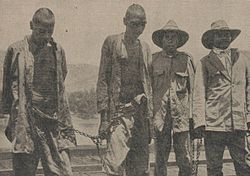IND/The Royal Commission into Aboriginal Deaths in Custody
The Commissioners produced a total of 110 reports detailing the lives and deaths of the 99 Indigenous men, women and children who lost their life whilst in custody during 1980-1989 and made a total of 339 recommendations to Federal, State and Territory governments. As stated in the Royal Commission Report (Johnston, 1991, Volume 1, Part 2, 16):
| “ | This inquiry has been unique in Australia’s history. Whilst Aboriginal people have been subjected to and have participated in an extraordinary number of inquiries and studies into various aspects of their lives and of policies affecting them, there has never before been such a comprehensive inquiry as that conducted by the Royal Commission. The whole range of societal and historical factors which impact on Aboriginal lives came into focus from the investigations into the deaths of so many of them which occurred ostensibly under the care and protection of the State. | ” |
The Commission found that Aboriginal people do not die in custody at a rate greater than that of non-Indigenous people in custody. However, what the Commission did find is that Indigenous Australians are subjected to custody at a rate which is “overwhelmingly different…compared with the rate of the general community” (Johnston, 1991, Volume 1, 6) and that this fact is reflected in the high number of deaths of Indigenous detainees. In other words, the Commissioners found that the number of Indigenous deaths in custody is directly relative to the over-representation of Aboriginal Australians in custody. Very significantly, the Commissioners found that “Aboriginality played a significant and in most cases dominant role in their being in custody and dying in custody” (Johnston, 1991, Volume 1, 1).
| “ | The conclusions are clear. Aboriginal people die in custody at a rate relative to their proportion of the whole [prison] population which is totally unacceptable and would not be tolerated if it occurred in the non-Aboriginal community. But this occurs not because Aboriginal people in custody are more likely to die than others in custody but because the Aboriginal population is grossly over-represented in custody. Too many Aboriginal people are in custody too often (Johnston, 1991, Volume 1, 6) | ” |
